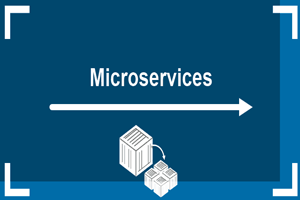Introduction
Microservices is a way for software architecture to build a big, complex application using multiple small components that each perform a single task, such as authentication, notification, or payment processing. Each microservice is a distinct unit within the project, with its own codebase, infrastructure, and database. The microservices work together, communicate by web APIs or messaging queues to send responses to incoming events.
Microservices can convert a complex monolithic application into a set of services, which will be faster to develop, and easier to understand and maintain. Each of these services can also be developed independently by a separate team that will be focused on that service. It also allows developers for continuous deployment, because each microservice can be deployed independently on an independent server.
Pros of Microservices:
- Load Balancing: You can safely scale your app using advanced load balancing.
- Faster Development: Due to their size and autonomy, a microservices-based approach results in shorter development cycles, as different teams can be implementing different services simultaneously – dependency between teams is usually eliminated.
- Flexible Deployment: Microservices can easily be deployed on containers like Docker, which results in less overhead and portability across different systems with different environments.
- Simpler: By dividing the services, each service will be easy to develop and maintain.
- Cache: Improve performance while decreasing load on your application with flexible caching.
- Troubleshooting: Easily identify failures in service.
- Agnostic: Run in containers, on your existing hardware, or in the cloud
Cons of Microservices:
- A microservice architecture involves added complexity, as developers have to mitigate fault tolerance, reduce network latency, deal with varying programming languages, as well as load balancing across multiple services.
- Testing microservices is very complicated, because of their distributed nature.
- Increasing the number of microservices in an application will increase the effort for integration and management.
- Dealing with multiple databases will become painful with the increase.
Knowledge of .NET is quite rewarding in the IT industry. If you have got some skills in the .NET framework then a .NET certification from StudySection can prove to be a good attachment with your resume. You can go for a foundation level certificate as well as an advanced level certificate in the .NET framework.




